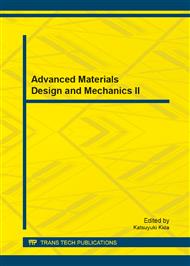p.416
p.420
p.424
p.428
p.433
p.437
p.441
p.445
p.450
Effects of Activated Carbon in Microwave Induction of Lateritic Ore
Abstract:
Lateritic ore can be heated and deoxidized rapidly via microwave irradiation with activated carbon as deoxidizer. In this paper, we studied the reductive roasting behavior of carbon-containing lateritic ore in microwave field and the composition of products through different heating process with varying carbon content. The results show that the heating process of the lateritic ore is a thermally stable process. The reductive level of lateritic ore can be adjusted by changing the proportion of carbon powders and the heating time of microwave irradiation. During this reductive roasting process, the quality of the added carbon powders will make a great impact on the phase composition of the product and then affect the heating rate. The reductive calcite product mainly consists of magnetite and wastage. With the rising of the content of reducing agent, the reductive level of lateritic ore will increase, which cause Ni and a small quantity of Fe to be deoxidized and forms Ni-Fe alloy.
Info:
Periodical:
Pages:
433-436
Citation:
Online since:
August 2013
Authors:
Keywords:
Price:
Сopyright:
© 2013 Trans Tech Publications Ltd. All Rights Reserved
Share:
Citation:


